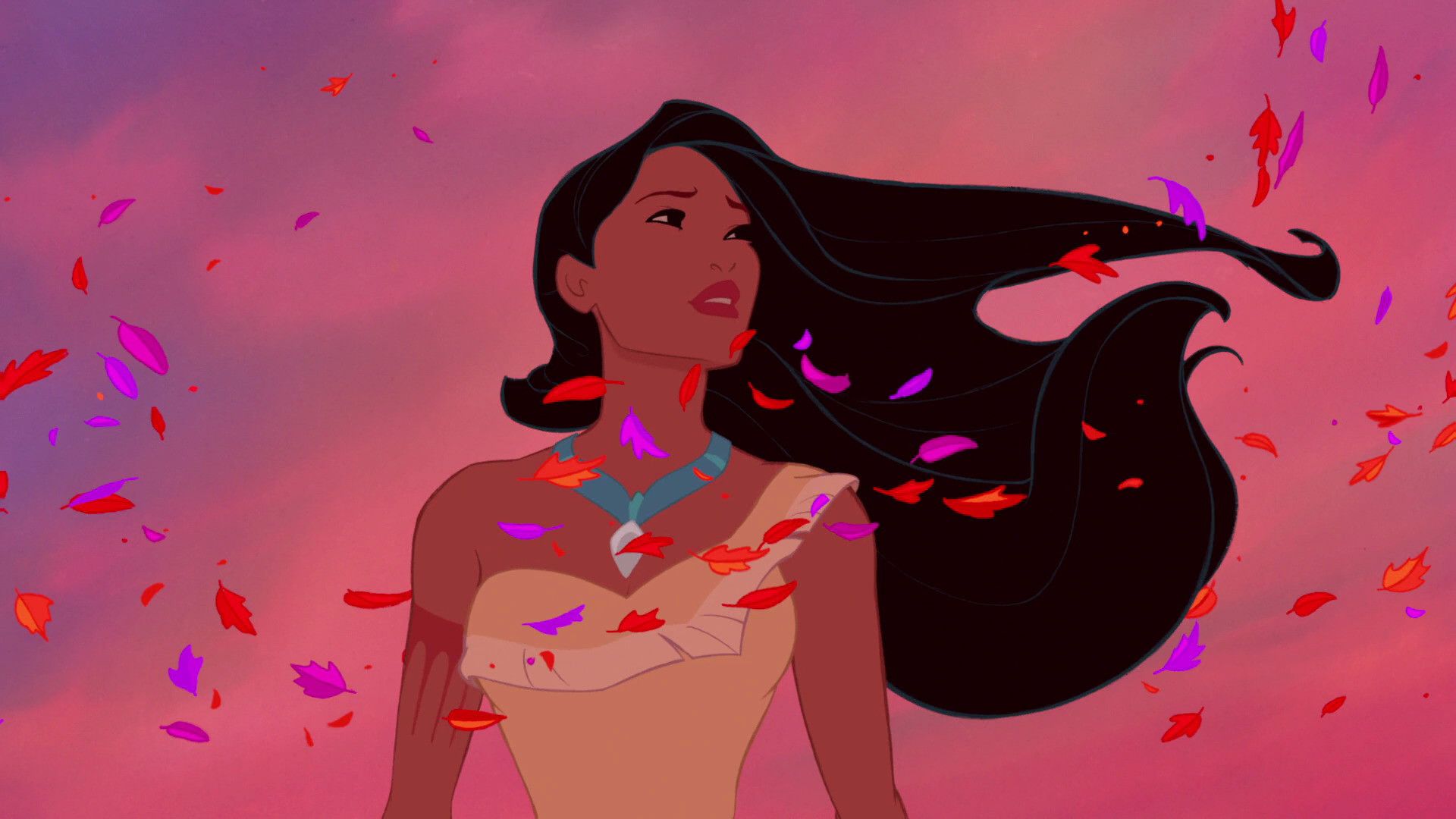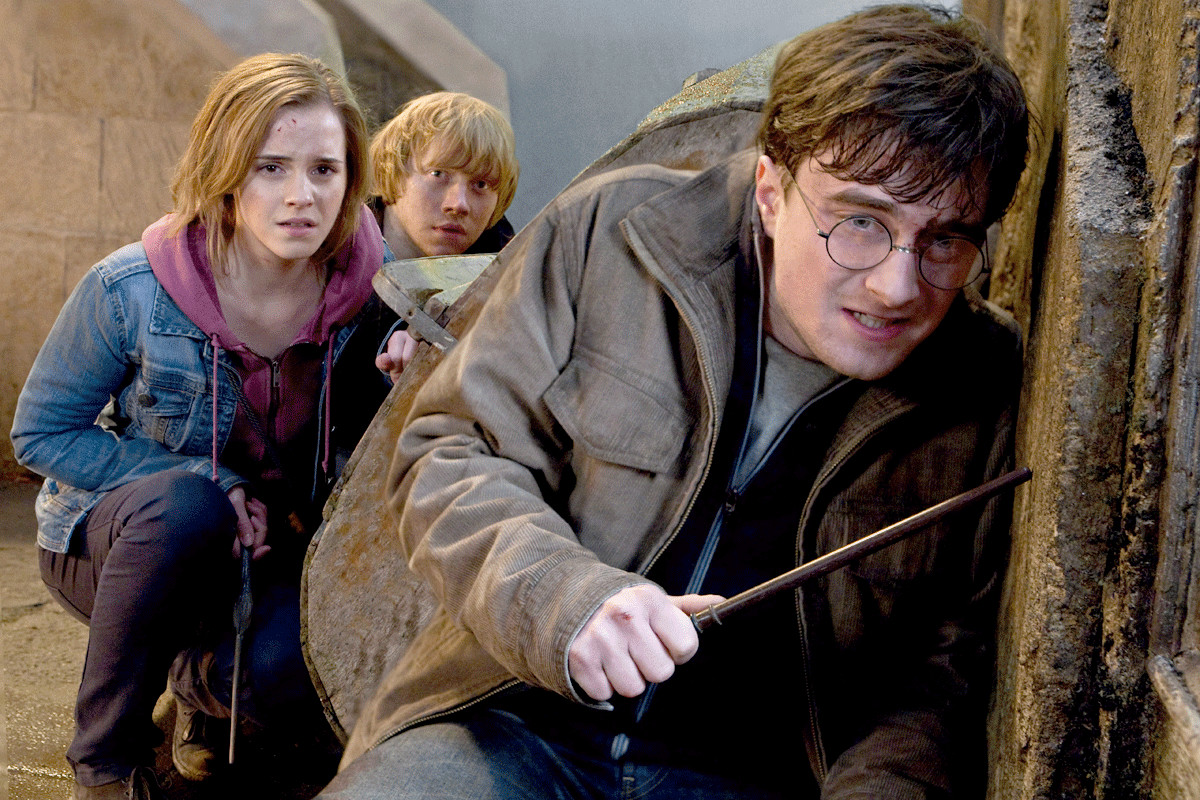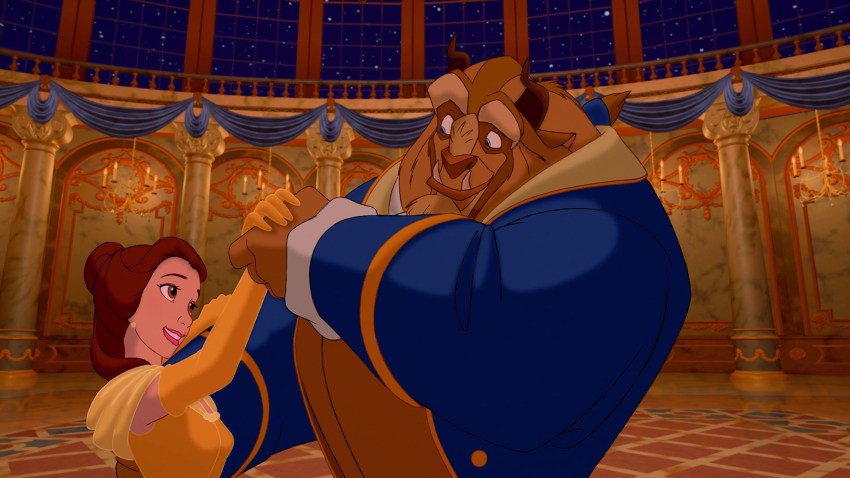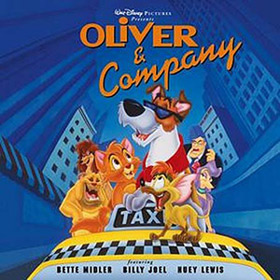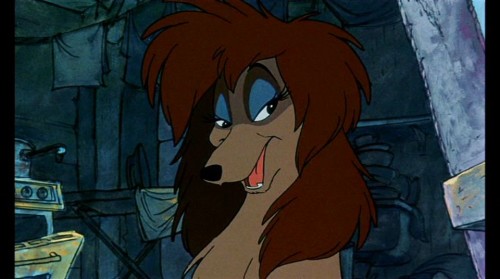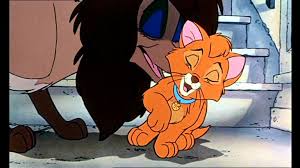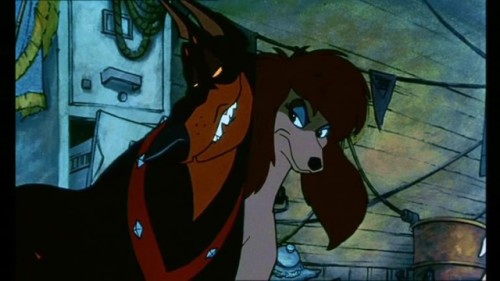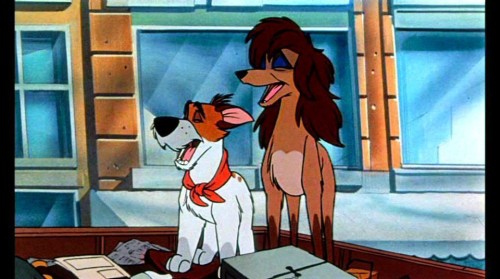This guest post written by Ian Pérez appears as part of our theme week on Unpopular Opinions.
[Trigger Warning: Discussion of allegorical rape]
The Disney animated series Gargoyles, created by Greg Weisman (The Spectacular Spider-Man, Young Justice) is often noted for being progressive in an industry that often was even less so than it is now. Debuting in 1994, it expressed this primarily via its co-protagonist Elisa Maza (Salli Richardson-Whitfield), the Black, Native detective for the NYPD who served as the secret-keeper, partner, best friend, and love interest to gargoyle-out-of-time Goliath (Keith David) decades before Sleepy Hollow raised our hopes and shattered our hearts with Abbie Mills.
Elisa wasn’t just a fantastic character in her own right, although she certainly was that. A large part of what made her special was that she was not dropped into the world of Gargoyles alone and contextless to be an accent in a white narrative. She has a family, whose members all take part in the story — her father, Peter (Michael Horse), who belongs to the Hopi nation and like Elisa works for the NYPD; Diane (Nichelle Nichols), her mother, an academic who we eventually see in Nigeria, connecting with her roots; and siblings Derek (Rocky Carroll), who flies helicopters for the NYPD (being a cop is in the Maza blood) and Beth, off in college. In short, thought was placed into this. While Elisa was not conceptualized with her canonical heritage in mind, once established, the writers did not shy away from it, and it seems on its own like solid evidence that Weisman, to some degree, gets the importance of diversity and inclusivity.
Yet Gargoyles is also a fantastic showcase of what can happen when creators possessing privilege write stories about the oppressed without their input. Weisman and his staff had good intentions, and yet that didn’t stop them from writing “Heritage,” a perennial contender for the award of Most Racist Story That Tried Not to Be Racist (Television). In the episode, Elisa essentially tells the chief of a failing First Nation village, whom she’s only just met, that he’s performing his identity wrong, and is proven correct by the narrative. While that episode is an outlier, it is not alone — despite the show’s attempts to be about oppression and about being the Other, it falls down in multiple and consistent ways featuring more than one episode where the message they wish to send is not the message they are actually sending.
The first of these episodes is “Revelations,” an episode focusing on Matt Bluestone (Tom Wilson), who is Elisa’s partner on the force and a white man. A conspiracy theorist, his private investigation into the Illuminati society leads him to discover that Elisa has been lying to him as part of her attempts to keep the gargoyles’ existence from him. Incensed, he one night insists on driving Elisa’s car (something she normally never allows) and then threatens to send it careening over a cliff with them in it unless she tells him the truth. The gambit works and Elisa not only spills, but actually apologizes for keeping the secret. Matt apologizes for threatening her and the episode acts as if the two offenses were somehow equivalent, and as if both characters are equally worthy of sympathy.
It’s entirely possible Matt’s threat was just a bluff, that Elisa was never really in danger; she takes control before tragedy can strike, so we can’t know. It doesn’t really matter; he threatened her. The way the episode shoves it under the rug indicates that his concerns, priorities, and feelings are more important than Elisa’s. Matt doesn’t need to accept Elisa’s secret-keeping, despite the fact that she has every right to keep secrets from him; Elisa will have to accept that she’s partners with a man who feels entitled to threaten her, and the show won’t even allow her to be uncomfortable or fearful about it. She just has to be the better person and forgive him.
This sort of false equivalency is part of a pattern for Gargoyles. Elisa is just as bad as Matt because she kept a secret. As seen in the episode “Shadows of the Past,” the would-be ally and actual traitor responsible for the death of Goliath’s clan gets to move on to the afterlife because he saved Goliath that one time, minutes after abandoning his own attempts to kill the gargoyle.
In another storyline, a rapist gets to get back together with his ex because he feels really, really bad about raping her. Okay, so it’s not technically rape, although there are certainly enough parallels in “Mark of the Panther” to make the comparison inevitable. The episode focuses on Tea (Roxanne Beckford), a Nigerian villager who breaks up with her boyfriend Fara Maku (Don Reed) because she wishes to start a new life in the capital. Consequently, Fara Maku seeks and finds Anansi (LeVar Burton), the trickster spider god, and implores it to turn him into a were-panther, so that he may then turn her into a were-panther, forcing her to remain and binding her to him. Granted this boon, Fara Maku attacks Tea and marks her, causing her to uncontrollably take feline form during moments of great emotional stress. Furious, frustrated, and ashamed, she becomes a poacher and returns to her village to hunt down panthers, and it is then that she discovers the truth. Upon doing so, Tea lays the blame for everything not on Fara Maku, but on Anansi, and after defeating the trickster god (with the help of the gargoyles and Elisa, who are also in this episode) both were-panthers decide that, as penance for what they’ve done, they should get back together and use their powers to protect the jungle. Note that for Tea, “what they’ve done” is “illegally hunt animals” and “attempt to kill the man who ruined her life in a situation where justice by legal means is impossible” (and all but impossible, had it been an actual rape) while for Fara Maku, it’s “violate his ex in a way that prevents her from having the life she wanted so that she would stay with him.” The show insists that these are equivalent. The show is wrong.
One could, if one wanted to, surmise that Gargoyles — in presenting Matt Bluestone and Fara Maku’s actions as the result of frustration and ignorance rather than malice and entitlement — is attempting to express that things are not always simple and that good people can do harm. If that is the case, it misses the mark entirely. What it does instead is normalize the male characters’ entitlement, obfuscate the misogyny behind it, and then reward the characters with what they wanted in the first place. In the face of injustice, women’s — Black women’s, at that — only recourse is to forgive and be okay with things because, hey, at least the men feel bad about what they’ve done. Their lives, safety, and comfort are secondary.
Gargoyles, with its “protecting a world that hates and fears them and has been fairly successful in enacting their global genocide” premise, seeks to be about marginalized peoples. At the same time, it consistently centers and prioritizes the lives of the privileged over those of the oppressed, and places the burden of obtaining justice on the latter. It is on Elisa to de-escalate the situation by giving Matt what he wants. It is on Tea to get used to circumstances which she never asked for, and to be okay with living the life Fara Maku wanted for her. More generally, it is on the gargoyles to continuously be the better species, until humanity decides that it is willing to treat them like people.
Perhaps no one exemplifies how the writers reward privilege better than David Xanatos (Jonathan Frakes). An Unscrupulous Billionaire™, he purchases the castle the gargoyles lived on and protected and breaks the spell that has kept them frozen in stone for a thousand years. He acts as their benefactor, but soon enough it becomes clear that his motives are not altruistic. What he actually wants is to have superhuman servants, and he’s willing to lie and manipulate the gargoyles in order to keep them under his thumb, or kill them if he cannot. Thanks to Elisa, Goliath and clan see the truth about who Xanatos is and leave him behind, although the plutocrat will remain one of their two core enemies, enacting multiple plots against them and Elisa — even hiring her brother Derek as his bodyguard so that he can then “accidentally” and permanently mutate him into a winged cat creature. (Derek, too, is forced to accept this turn of events.)
Eventually, though, Xanatos’ attitude towards the gargoyles softens, most notably after they help him save Manhattan from a spell that turned every person in it to stone — a spell whose execution he facilitated, if accidentally — and then even more so after the gargoyles prevent his son from being taken by the Faerie King Oberon, after which Xanatos considers himself to be in the gargoyles’ debt. Not long after, after the gargoyles’ second home is destroyed by gargoyle hunters, Xanatos invites his former enemies to return to their first one, in the process getting the super-human guardians he always wanted. He’s still the same bastard he always was; he’s just now the gargoyles’ bastard. (He is a fan favorite. He used to be one of mine.)
With the proper context, this wouldn’t necessarily be a problem: a world in which the people with the most privilege are the ones who win most often, and where the underprivileged must often make moral compromises in order to survive is, disappointingly, an accurate representation of the one we actually live in. However, the show’s worldview is incomplete and one-sided. It delegitimizes anger as a response to injustice — the only gargoyle who is consistently angry at human’s genocidal instincts and consistently questions gargoyles’ protective instincts is the villain, Demona (Marina Sirtis), and initially the series’ only female gargoyle. The series argues that marginalized peoples will always be alright, in the end, eliminating the need for reparations or actual change: Matt is the perfect partner after learning the secret; Derek will eventually find a measure of contentedness, as will the gargoyles; we have no idea what happens to Tea, but she is presumably not again being abused by her former attacker. This is not actually the case in real life: being the better people and turning the other cheek has not, traditionally, been a recipe for large-scale social change. The show might have understood this, with more women and people of color behind the scenes.
I first began watching Gargoyles during college, long after the series had ended and I’d stopped being its target audience. It is in many ways my Buffy the Vampire Slayer, catching my attention with its character relationships and cleverness and what was then an attractive version of social consciousness. Like with Buffy, it took time for its limits to become apparent. My love for the series has survived a thorough examination of its flaws, although now it becomes impossible to praise it as I may have once done. Elisa is still fantastic, sure, and I love her to pieces; but the series is now also largely a reminder of how little things have changed since 1994 and how good intentions aren’t enough.
Years after its cancellation, Gargoyles got resurrected in comic book form in 2006, continuing Goliath and his clan’s adventures under the hand of their creator. It is in some ways an improvement, reflecting an increased understanding of the importance of diversity in world-building. In other ways, however, it is still problematic in the same places. Its first original story has Xanatos invite the gargoyles to a Halloween party at his castle, ostensibly as a way for the gargoyles to befriend the New York City elite in a safe environment at a time when anti-gargoyle sentiment has spiked. The gargoyles, still acclimatizing to their new situation, are nothing less than over the moon about this. Elisa, who has been invited to the party independently from the gargoyles, also attends, in costume and with a date. If she has reservations about attending a party hosted by the person who destroyed his brother’s life, and who has neither apologized or attempted to mitigate the harm he has caused, they remain unsaid. It, too, shall pass.
Ian Pérez is a Puerto Rico-based translator, editor, and writer currently working on doing at least one of those professionally. He thinks a lot about Gargoyles and writes about it at Monsters of New York and about other things, which he writes about at Chasing Sheep. He is also @DoKnowButchie on Twitter.









